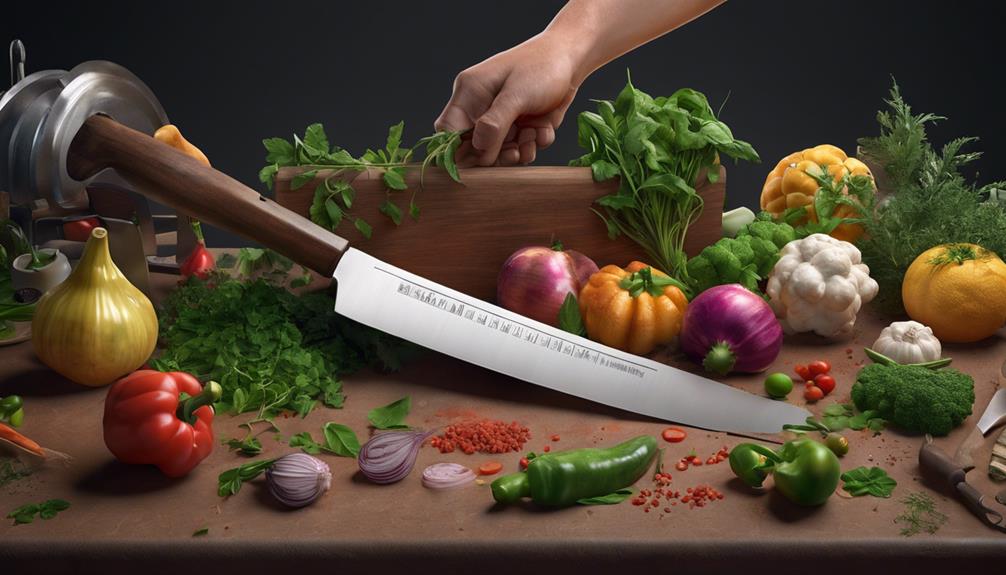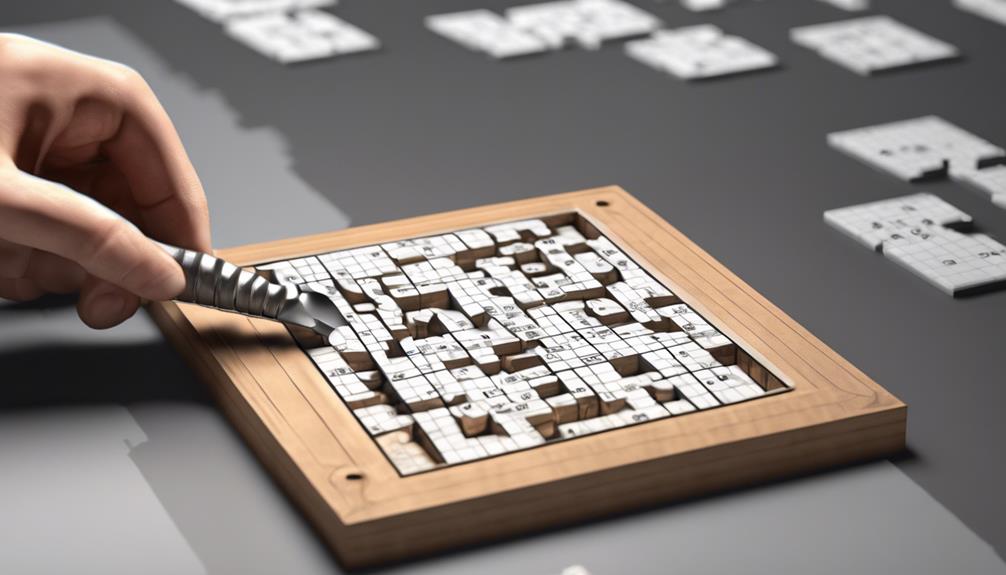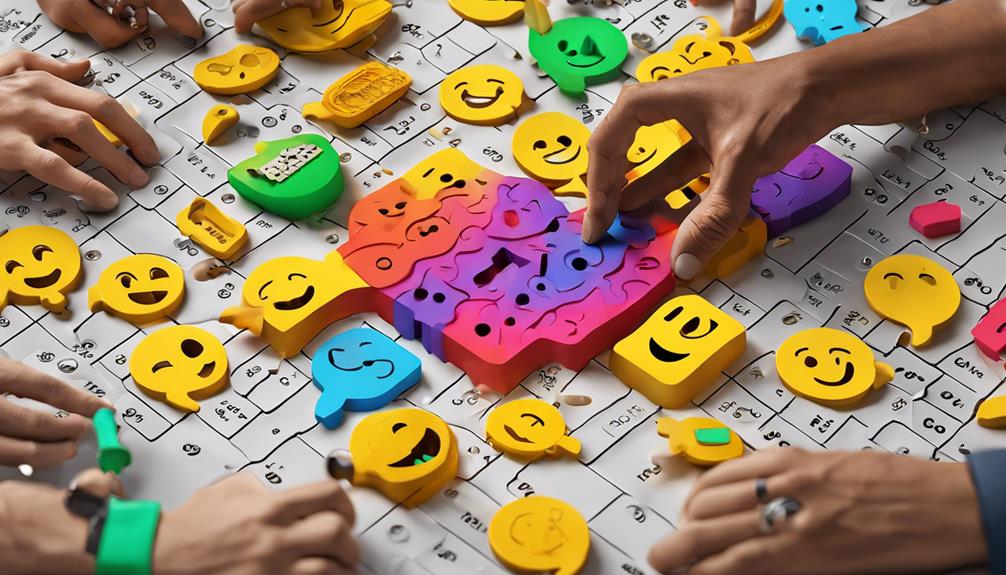Looking for the 'Chopping Tool' theme in the NYT crossword? This puzzle adds a cutting-edge twist to your solving experience by blending wordplay and linguistic creativity that slices through mental blocks. From versatile axes to precise mezzalunas, these puzzles nod to the significance of these tools across history. If you're ready to tackle challenges that test your vocabulary and thinking skills, this theme is for you. The puzzles are designed to offer a satisfying mental workout that will leave you feeling accomplished once you solve the code. Explore this unique crossword theme and crack a world of creative problem-solving.
Key Takeaways
- 'Chopping Tool' puzzles feature in NYT Crossword.
- Puzzles may involve removing letters to fit answers.
- Known for intricate design and challenging clues.
- Solvers appreciate the unique challenge and creativity.
- Community discussions share solving strategies and feedback.
The Significance of 'Chopping Tool'

The term 'chopping tool' holds a significant role in various contexts due to its versatile usage and essential applications in daily life. In history, chopping tools have been vital for human survival and progress. From early humans using sharp stones to cut meat and gather food to modern kitchen knives aiding in food preparation, the history of chopping tools is deeply intertwined with the development of civilization.
The usage of chopping tools extends beyond culinary purposes. In ancient times, these tools were indispensable for crafting materials, building shelters, and even in warfare. The evolution of chopping tools showcases how humans adapted and innovated to meet their ever-changing needs. Today, chopping tools come in various forms such as axes, cleavers, and mezzalunas, each designed for specific tasks.
Understanding the history of chopping tools provides insight into the ingenuity of our ancestors and the progression of technology. The practical applications of these tools in daily life are evident in cooking, woodworking, gardening, and many other activities.
Whether you're slicing vegetables for a meal or chopping wood for a fire, the chopping tool remains a fundamental instrument that bridges the past with the present, highlighting its enduring relevance in society.
Evolution of the Clue
Over time, the clue in the New York Times crossword puzzle has undergone significant evolution to challenge and engage solvers effectively. The origins of crossword clues can be traced back to the early 20th century when the first known crossword puzzle was published in 1913. Initially, clues were straightforward definitions or synonyms of the answer, providing solvers with direct hints.
As the crossword puzzle gained popularity, clues began to evolve to include linguistic connections, such as wordplay, anagrams, and puns. This shift allowed for more creativity and complexity in clue construction, challenging solvers to think beyond literal meanings. Linguistic connections in clues added a new layer of depth to the puzzle-solving experience, requiring solvers to decipher cleverly crafted hints.
The evolution of the clue in the NYT crossword has also seen the incorporation of pop culture references, modern slang, and current events. By integrating these elements into clues, the puzzle stays relevant and engaging for a diverse audience. This evolution has transformed crossword solving from a simple word association game to a mental workout that requires a combination of vocabulary, general knowledge, and critical thinking skills.
Solving Strategies and Tips

When tackling the New York Times crossword puzzle, consider starting with the longer, multi-word answers first to build momentum and confidence in your solving approach. These answers often provide more clues and can act as anchors to help you fill in other parts of the grid.
Another helpful strategy is to scan through the clues quickly and solve the ones that immediately come to mind. This initial pass can give you a good foundation to work from and may help you solve interconnected clues more easily.
Solving techniques like working from the crossing words can also be beneficial. If you're stuck on a particular clue, look at the words intersecting with it to see if they can provide hints. Additionally, pay attention to the tense and context of the clue, as they can often lead you to the correct answer.
Common pitfalls to avoid include getting fixated on one answer and trying to force it into the grid. Sometimes, taking a break and returning with fresh eyes can help you see the clue in a new light.
Another mistake isn't checking your answers against the intersecting clues, which can lead to errors that are hard to spot later on. By being methodical and patient, you can improve your crossword-solving skills and tackle even the trickiest puzzles with confidence.
Famous 'Chopping Tool' Puzzles
Explore the world of famous 'Chopping Tool' puzzles, known for their intricate design and challenging clues. These puzzles are revered for their unique structure that necessitates solvers to chop off letters from certain answers to fit them into the grid correctly.
One famous 'Chopping Tool' puzzle had the solution 'KITCHENSINK,' where solvers had to remove “H,” “E,” “N,” “S,” “I,” “K,” “I,” and “T” to fit it in the grid.
Themed variations of 'Chopping Tool' puzzles add another layer of complexity. In these puzzles, not only do solvers need to chop off letters to fit answers, but they also need to take into account the theme of the puzzle. For example, a puzzle themed around famous landmarks might require solvers to remove letters related to buildings or locations to complete the grid.
Solvers often appreciate the cleverness and innovation behind these puzzles, as they provide a fresh and challenging twist to traditional crossword solving. While 'Chopping Tool' puzzles can be frustrating at times, the satisfaction of finally cracking the code and completing the grid is immensely rewarding.
Keep an eye out for these puzzles in your favorite crossword publications, and test your skills at solving these intricate and engaging challenges.
Community Reactions and Discussions

The community's reactions and discussions regarding 'Chopping Tool' puzzles have sparked insightful conversations and diverse perspectives among avid solvers. It is fascinating to see how different solvers approach and react to these challenging puzzles. Let's explore some of the key points that have emerged from the community feedback and discussions:
| Community Feedback | Solving Techniques | Insights |
|---|---|---|
| Many solvers appreciate the unique challenge 'Chopping Tool' puzzles offer, pushing them to think outside the box. | Some solvers have shared innovative solving techniques, such as breaking down longer clues into smaller parts for easier analysis. | A common insight is that these puzzles not only test vocabulary but also require logical reasoning and creative problem-solving skills. |
| Some solvers expressed frustration at the difficulty level of 'Chopping Tool' puzzles, highlighting the need for a balance between challenge and solvability. | Others find that focusing on the intersections of words within the grid helps unravel complex clues more effectively. | Understanding the subtle nuances of wordplay and honing pattern recognition skills are essential for mastering these puzzles. |
| The community has also discussed the importance of constructive feedback to puzzle creators, contributing to the evolution and improvement of future 'Chopping Tool' puzzles. | Exploring different solving approaches, such as working from the bottom up or using anagrams, has been a popular topic among solvers. | Engaging with fellow solvers and sharing solving strategies fosters a sense of camaraderie and collective learning within the crossword community. |
Conclusion
You've now navigated the world of 'chopping tool' clues in NYT crosswords! Remember to keep an eye out for this common crossword puzzle term and use your solving strategies to tackle it with ease.
Stay sharp and keep puzzling!
